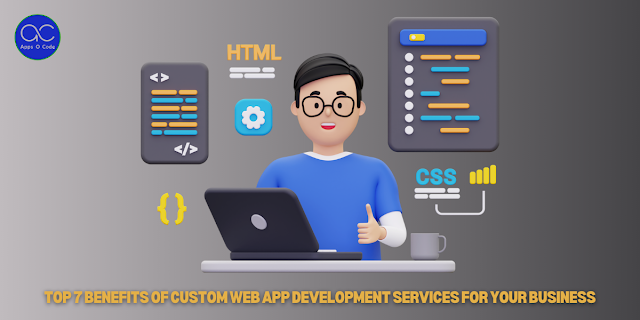Understanding The Different Models Of IT Staff Augmentation Services
In the dynamic world of information technology, staffing needs can fluctuate rapidly based on project requirements, business growth, and emerging technologies. IT staff augmentation services offer a flexible solution to address these needs by providing temporary, specialized talent to complement your existing team. However, not all IT staff augmentation models are created equal. Understanding the different models available can help businesses choose the right approach to meet their specific objectives and challenges.
What is IT Staff Augmentation?
IT
staff augmentation is a strategic approach that involves supplementing a
company’s internal IT team with external professionals on a temporary basis.
These specialists bring specific skills and expertise to assist with projects,
fill skill gaps, or manage peak workloads. Unlike traditional hiring, staff
augmentation allows organizations to scale their workforce efficiently without
committing to long-term contracts.
Models of IT Staff Augmentation
- On-Site Augmentation
Overview: In this
model, augmented staff work on-site at the client’s location. They become part
of the client’s team and work closely with internal employees.
Benefits:
- Seamless Integration: On-site professionals can integrate more easily with
the existing team, facilitating direct communication and collaboration.
- Immediate Access: Provides immediate access to resources without the
need for remote coordination.
Considerations:
- Logistics: Managing on-site staff requires physical space and
can involve additional administrative overhead.
- Cost: May be more expensive due to travel expenses and
other logistical costs.
- Off-Site Augmentation
Overview: Off-site
augmentation involves professionals who work remotely from their own locations
or a third-party facility. They provide their services through digital
communication and collaboration tools.
Benefits:
- Cost Savings: Typically more cost-effective as it eliminates the
need for office space and associated overhead.
- Access to a Global Talent Pool: Allows businesses to hire experts from around the
world, broadening the talent pool.
Considerations:
- Communication: Requires effective remote communication tools and
practices to ensure smooth collaboration.
- Time Zone Differences: Can present challenges if team members are located
in different time zones.
- Hybrid Augmentation
Overview: The hybrid
model combines both on-site and off-site augmentation. Staff may work remotely
for part of their duties while being on-site for critical phases or meetings.
Benefits:
- Flexibility: Offers a balance between the benefits of on-site and
off-site work, adapting to different needs and phases of a project.
- Resource Optimization: Allows businesses to optimize resource allocation
based on specific project requirements.
Considerations:
- Coordination: Requires careful planning to manage the integration
of on-site and remote work effectively.
- Consistency: Ensuring consistent communication and project
updates can be challenging.
- Project-Based Augmentation
Overview: This model
focuses on providing staff specifically for the duration of a project. The
professionals are hired to work on a defined project with clear goals and
timelines.
Benefits:
- Targeted Expertise: Brings in specialized skills needed for the specific
project, enhancing quality and efficiency.
- Defined Scope: Clearly defined objectives and timelines make it
easier to measure performance and outcomes.
Considerations:
- Short-Term Focus: The temporary nature of this model may limit
long-term continuity and support.
- Integration: May require additional effort to integrate the
temporary team into the existing workflow.
- Skill-Specific Augmentation
Overview: In this
model, staff augmentation is focused on providing experts with specific
technical skills or knowledge that are not available in-house.
Benefits:
- Expertise on Demand: Provides access to niche skills or technologies that
are critical for particular projects or tasks.
- Efficiency: Helps in addressing skill gaps quickly without the
need for extensive training or long-term hiring.
Considerations:
- Specialization: The focus on specific skills means that
professionals may only be needed for particular tasks or phases.
- Dependency: Heavy reliance on external experts can create
challenges if those skills are needed long-term.
- Staff Augmentation with
Training
Overview: This model
includes not only providing external IT professionals but also involves them in
training the internal team. This can help in building long-term capabilities
within the organization.
Benefits:
- Skill Development: Enhances the skills of the internal team through
knowledge transfer and training.
- Long-Term Value: Provides lasting benefits by developing the in-house
team's capabilities.
Considerations:
- Investment: Requires a commitment to both the training process
and integrating the augmented staff into the learning environment.
- Effectiveness: The success of this model depends on the
effectiveness of the training and knowledge transfer process.
Choosing the Right Model
Selecting
the appropriate IT staff augmentation model depends on several factors,
including the nature of the project, budget constraints, team dynamics, and
specific skill requirements. Here are a few steps to guide the decision-making
process:
- Assess Needs: Identify the specific needs of your project or
organization, including skill gaps, project duration, and preferred
working arrangements.
- Evaluate Options: Consider the benefits and challenges of each
augmentation model in relation to your requirements.
- Consult with Providers: Engage with IT staff augmentation providers to
discuss your needs and get insights on which model might be the best fit.
- Plan Integration: Develop a plan for integrating augmented staff into
your existing team and processes to ensure smooth collaboration and
project success.
Conclusion
Understanding
the different models of IT staff augmentation
services can help organizations effectively address their IT staffing
needs and enhance overall project outcomes. By selecting the right model,
businesses can leverage external expertise to complement their internal teams,
optimize resource allocation, and achieve their technology goals efficiently.
Whether you need on-site, off-site, hybrid, or skill-specific augmentation,
each model offers unique benefits that can be tailored to meet your specific
requirements.




Comments
Post a Comment